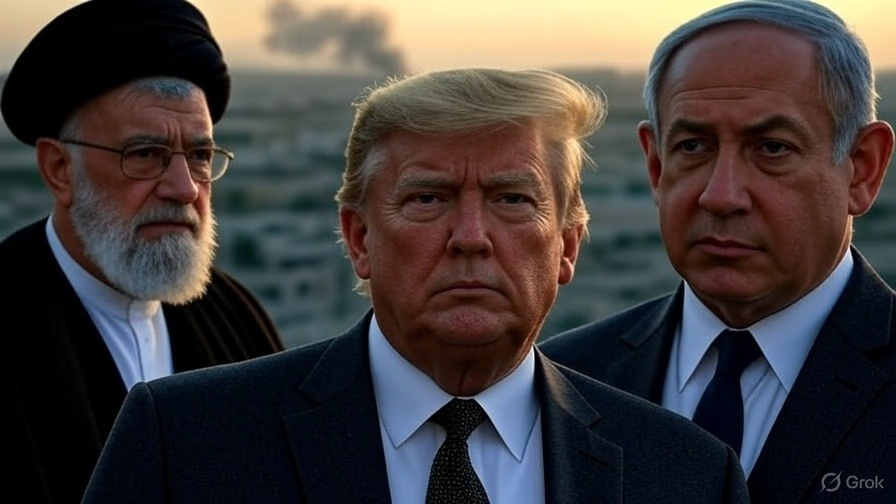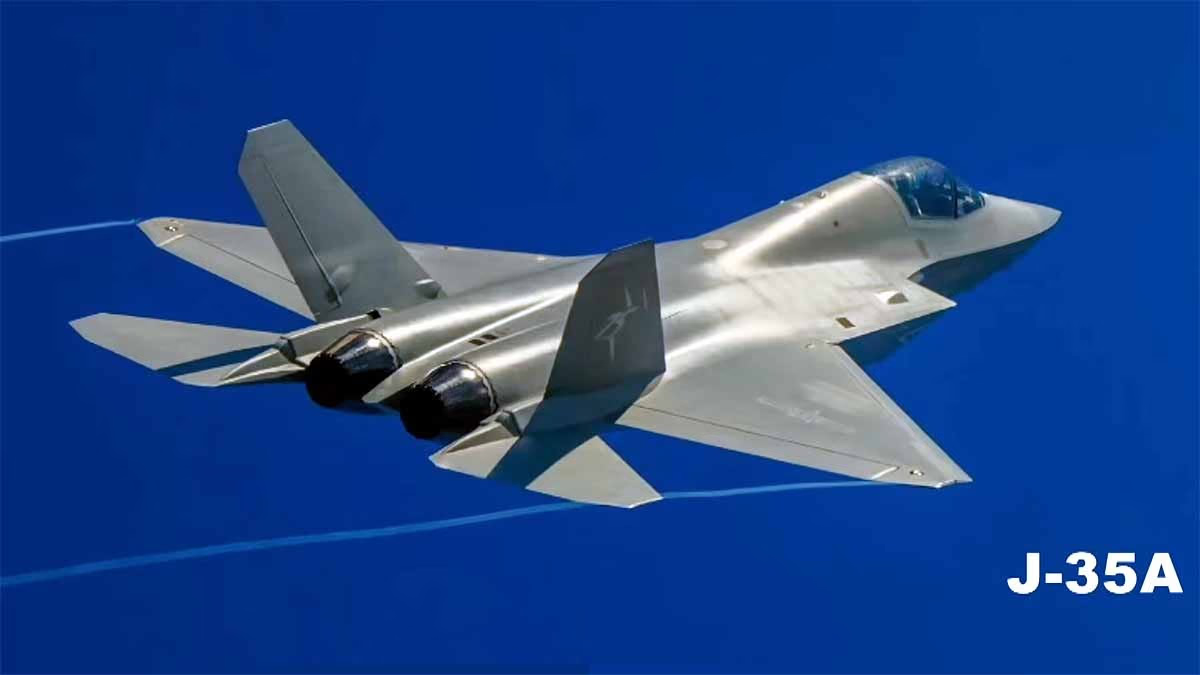On June 24, U.S. President Donald Trump declared the end of the 12-day Iran-Israel war. For almost two weeks, the Middle East stood on the brink of war, with Iran and Israel launching attacks against each other using fighter jets, drones, and hypersonic ballistic missiles. In a region abundant with energy resources, a war here is akin to firing a weapon at a gas station—any single bullet could spark devastation.
In the Middle East, the spark for this conflict ignited on October 7, 2023, when Hamas' zealous military leader Yahya Sinwar ordered the massacre of 1,200 Israeli civilians. This event threw the region into its gravest crisis since the Yom Kippur War in 1973, which was the last traditional war between Israel and an Arab state (Egypt).
In 2023, Israel launched a military campaign against Hamas in the Gaza Strip, escalating the conflict until U.S. intervention ended it, notably with an American bombing of Iranian nuclear sites on June 22. This 12-day war became the deadliest conflict in the West Asia region since the Yom Kippur War of 1973, and its narrative revolves around three central figures: Israeli Prime Minister Benjamin Netanyahu, U.S. President Donald Trump, and Iran's Supreme Leader Ayatollah Ali Khamenei.
Boundaries of the Iran-Israel Conflict Defined by Geography
In wars lacking decisive outcomes, victory remains elusive. This 12-day conflict promised 'regime change', yet it did not materialize. When the U.S.-led coalition invaded Iraq in 2003 with 160,000 troops, the coalition unseated Saddam Hussein's army, installing a pro-Western regime. However, no ground action materialized here by 2025. Iran and Israel remain stationed where they were in October 2023, with both governments unchanged. The geography set the boundaries of this conflict.
Iran and Israel are separated by over 1,000 kilometers; the war played out in the airspace over Iraq, Jordan, and Syria. Israeli pilots embarked on longer journeys akin to round trips between Delhi and Mumbai to bomb Iran. On the other hand, Iran, lacking a powerful air force, resorted to using drones and ballistic missiles against Israel.
Claims of Victory Post-War
On June 24, Netanyahu announced, "Israel achieved a historic victory that will be remembered for generations, having extinguished two immediate existential threats: the risk of nuclear destruction and devastation from 20,000 ballistic missiles."
Meanwhile, Khamenei, who faced the most severe military threat to his rule since 1979, asserted that Iran is not a nation that surrenders.
U.S. President Donald Trump, his dream of a Nobel Peace Prize still alive, took a leap into the Middle Eastern conflict first as a strategic bomber and later as a peace envoy. When examining on the ground, one clear winner emerges: Benjamin Netanyahu.
On October 6, 2023, Netanyahu was politically embattled. He was Israel's first prime minister formally charged in 2019 with three cases of fraud, breach of trust, and bribery. He was ousted in 2021, but made a comeback in 2022 by winning a majority.
Hamas Attack: Israel's Major Security Breach
On October 7, Hamas launched more than 5,600 fighters into Israel, launching 4,000 rockets and killing 1,200 civilians while taking over 200 hostages. This occurred despite Israel possessing concrete intelligence on Hamas's intentions. It ranked as Israel's largest security breach since the Yom Kippur War of 1973. Israel's response echoed the strategies of the 1967 conflicts when Syria, Jordan, and Egypt attacked Israel simultaneously.
This attack might have concluded the career of any other leader, but not Netanyahu. A former officer of Israel's Special Forces, his brother, Lieutenant Colonel Jonathan Netanyahu, heroically led the historic 1976 Entebbe operation in Uganda freeing Israeli hostages. Netanyahu dispatched the military to Gaza to eliminate Hamas and free approximately 250 Israeli hostages.
In retaliation, Iran mobilized its Shia proxy networks across Syria, Yemen, Iraq, and Lebanon. Iran's 'Axis of Resistance,' assembled over two decades by IRGC Commander Major General Qassem Soleimani, became operational.
Among them, Hezbollah posed the largest threat, launching missiles and rockets towards Israel, prompting northern Israeli evacuations. Located 2,000 kilometers away in Yemen, the Shia organization Houthis fired missiles at Israel and blockaded the Red Sea for Western ships, commonly utilizing anti-ship ballistic missiles against commercial vessels. In Iraq, the Shia proxy group Kataib Hezbollah, also launched missiles at Israel.
Netanyahu Heeds Military Advice
In 2023, Netanyahu was advised militarily to confront Hamas and maintain other fronts. In reality, Israel could have concluded the conflict when the IDF gained control over large portions of the Gaza Strip, eliminating Yahya Sinwar in 2024.
Armies wage wars but politicians direct them. Netanyahu had to make the crucial decision, ultimately choosing the War of Attrition approach—a prolonged and arduous military campaign that lasted 20 months and concluded when Israel launched its first direct strike on Iran. In October 2024, Israel and Iran exchanged fighter jet and ballistic missile fire, escalating into a much larger conflict repeated in June 2025.
Operation Rising Lion: Israel's Largest Military Action
Netanyahu's fortune improved when Donald Trump returned to the White House on January 20. At the start of his first term in 2016, Trump annulled the Iran nuclear deal, which curbed global sanctions in exchange for halting Iran's nuclear program. In 2020, Trump ordered the assassination of General Qassem Soleimani in Iraq. During his second term, Trump vowed to end the Iran-Israel war, but Netanyahu had other plans.
On June 13, Israel launched 'Operation Rising Lion', its largest military action in two decades. Over 200 fighter jets embarked on numerous missions, targeting Iranian military bases, eliminating nuclear scientists, and assassinating military officials. By this time, Netanyahu had already breached Iran's Shia influence, spanning Lebanon and Syria, spreading into Iraq and Iran.
This axis was broken last December with Bashar al-Assad's regime collapse, rendering Syria to a Western-backed government. Israeli warplanes had already obliterated remaining Syrian air and naval assets with pre-emptive strikes, neutralizing Syria as a potential military threat to Israel.
Pager Attacks Crush Hezbollah
Hezbollah was crippled by limited Israeli ground incursions and targeted 'pager bomb' attacks on its top leadership, culminating in the death of their leader Hassan Nasrallah at the hands of the Israeli Air Force. Netanyahu's 'political gambit' was possibly an attempt to draw the US and President Trump into the conflict they hesitated to engage in.
With the war's end in June 2025 and the onset of a fragile ceasefire, Iran stands isolated and exposed. Its nuclear facilities lie in rubble, its proxy armies scattered, and Ayatollah Ali Khamenei remains hidden in a bunker, his regime grateful for survival.
Parallels with Former PM Golda Meir
Netanyahu's 20-month journey mirrors that of Israel's charismatic Prime Minister Golda Meir, leader during the 1973 Yom Kippur War. Israeli intelligence had failed to predict Egypt and Syria's surprise military assault. Israel retaliated, driving both nations to a stalemate, salvaging some prestige.
Golda Meir resigned in April 1974 when the Agranat Commission blamed her government for severe intelligence failures on the eve of the 1973 war. Here, the parallels between Golda Meir and Netanyahu diverge.
In 2024, an Israeli inquiry blamed the military and intelligence community for their lack of preparation for Hamas assaults. It revealed that cautions regarding Hamas activities leading up to October 7 were either ignored or misinterpreted. Until now, Netanyahu has resisted calls for any investigation into his political leadership failures that failed to prevent the attack.
Netanyahu Becomes Longest-Serving PM
By 2025, Netanyahu emerged as Israel's longest-serving prime minister in 17 years across six terms. This tenure overshadows his friend, Prime Minister Narendra Modi, who has served as India's Prime Minister for 11 years. Netanyahu and Modi have waged similar battles.
While Netanyahu attempted to incapacitate Iran and its proxy networks, PM Modi confronted Pakistan's nuclear blackmail used to shield its terrorists. The next time these leaders stroll along an Israeli shoreline, they will have far more pressing topics to discuss beyond just desalination plants.




